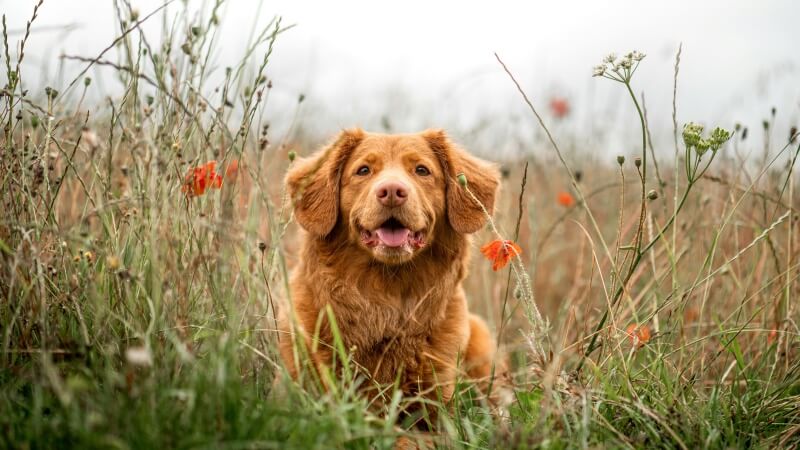
How To Craft A Cozy Cat Vest From Fabric Strips
Have you ever seen your feline friend lounging around and thought, “What could possibly make this picture more adorable?” The answer is simple: a cat

Tactical harnesses have become increasingly popular among pet owners who want to keep their dogs safe and secure during outdoor adventures. These sturdy harnesses are designed for strength, durability, and comfort to meet the needs of active working dogs.
Choosing the right tactical harness for your dog requires careful consideration of materials and construction to ensure it can withstand rugged use. This guide will examine the most common materials used in tactical dog harnesses and assess their durability and suitability for different applications.
Nylon is one of the most widely used materials for tactical dog harnesses due to its strength, flexibility and affordability. The tightly woven synthetic fibers make nylon resistant to abrasion, moisture and everyday wear and tear.
Nylon tactical harnesses provide a balanced blend of durability and comfort for most active dogs. They work well for light to moderate-duty use in police, military and adventure dog applications.
Cordura nylon is a heavier-duty, abrasion-resistant type of nylon fabric. It’s composed of extra strong synthetic fibers that are resistant to tears, scuffs and punctures. The dense weave makes it more durable than regular nylon.
Cordura nylon harnesses are a top choice for working dogs that face extreme conditions, like military and search and rescue dogs. It provides superior protection against wear and tear but isn’t as flexible as lighter nylon.
Ballistic nylon gets its name from its use in ballistic vests due to its dense, ultra-tough weave. It’s made from thick nylon fibers with a special tight weave to create a sturdy, protective material.
Ballistic nylon harnesses offer the highest level of durability and protection. They are the top choice for working dogs in challenging search & rescue, law enforcement, and military roles where failure is not an option.
Kevlar is an exceptionally strong synthetic fiber that is 5x stronger than steel by weight. It is resistant to high temperatures, abrasion, and cutting while remaining lightweight and flexible.
The bulletproof properties of Kevlar make it ideal for tactical harnesses used by dogs in high-risk police and military roles. It offers the ultimate in cut, tear and heat resistance in a harness.
Thick, durable leather has been used for many years to create strong, weatherproof dog harnesses. Full-grain leather has natural protective oils that make it abrasion, dirt, and moisture-resistant.
Leather harnesses have unmatched longevity when properly maintained. Full-grain leather construction ensures security for big, powerful dogs that pull hard against their harness during work.
Biothane is a synthetic webbing made to mimic the look and feel of leather. It is crafted from polyester coated in polyurethane for a supple, leather-like texture.
For pet owners who love the look of leather but not the upkeep, Biothane is an attractive option. The synthetic material offers good durability for light to moderate use while resisting weather damage.
Mesh fabric offers maximum breathability and airflow thanks to the woven pattern full of tiny ventilation holes. Nylon or polyester mesh is commonly used in areas of harnesses touching the dog.
Light, breathable mesh is ideal for high-heat environments or dogs who overheat easily. It should be combined with stronger materials to avoid rips and tears during use.
Harness padding provides an extra layer of shock absorption and pressure distribution for comfort. Thick foam, fleece or neoprene padding can be added to straps or panels that touch the dog.
Padding is an excellent add-on for dogs that will be wearing their tactical harness most of the day. It helps prevent chafing and irritation from long periods of hardcore use.
Quality buckles and hardware are often overlooked but play a critical role in the functionality of a tactical harness. Buckles should be sturdy enough to handle rough use without failing.
The best tactical harnesses use metal buckles and heavy-duty D-rings to match the strength of the base material. These components take abuse during intense working conditions.
A properly fitted tactical harness ensures security, freedom of movement and comfort. Follow these tips for ideal harness sizing:
Take measurements when a dog is standing naturally for the most accurate fit. Continue assessing fit during initial use and training. Adjust as needed to prevent slipping and rubbing.
True tactical gear must withstand rigorous testing to prove its resilience. Look for harnesses tested beyond normal wear and tear:
Abrasion Testing
Cut Resistance
Tensile Strength
Jump and Bite Testing
Buying from brands that thoroughly test on real working dogs provides confidence in the gear’s durability. This helps ensure it won’t fail during critical moments.
Proper care extends the lifespan of tactical dog harnesses:
Avoid excessive heat, chemical cleaners, and abrasive scrubbing that could degrade materials prematurely. Take time to properly clean and store the harness after intense activity.
Choosing the optimal tactical harness requires balancing durability, comfort, functionality and cost. High-performance working dogs need gear made to handle rigorous activities while keeping the dog safe and comfortable.
Consider the expected conditions and tasks when selecting harness materials that offer sufficient strength and abrasion resistance. Proper construction and hardware complement the base material to create a rugged, long-lasting harness.
While no gear lasts forever, understanding materials and quality helps extend the lifespan of tactical harnesses to get the most value from your investment. Train frequently using tactical gear to monitor functionality and fit.
With regular care and maintenance, top working dog harnesses will deliver years of uncompromised performance.


Have you ever seen your feline friend lounging around and thought, “What could possibly make this picture more adorable?” The answer is simple: a cat

The moment you consider a dog hunting vest for your adventurous companion, you’re stepping into a world where safety meets functionality. This vest is not

The concept of a dog cooling vest is a game-changer for pet owners looking to enhance their dog’s comfort during those relentless summer days. Imagine

When you first consider crafting a tactical dog vest, it’s not just about embarking on a fun DIY project; it’s about ensuring your furry companion’s

Have you ever seen your feline friend lounging around and thought, “What could possibly make this picture more adorable?” The answer is simple: a cat

The moment you consider a dog hunting vest for your adventurous companion, you’re stepping into a world where safety meets functionality. This vest is not

The concept of a dog cooling vest is a game-changer for pet owners looking to enhance their dog’s comfort during those relentless summer days. Imagine

When you first consider crafting a tactical dog vest, it’s not just about embarking on a fun DIY project; it’s about ensuring your furry companion’s
Secure and Empower, Walk Responsibly
Copyright © 2025pettacticalharness. All Rights Reserved.